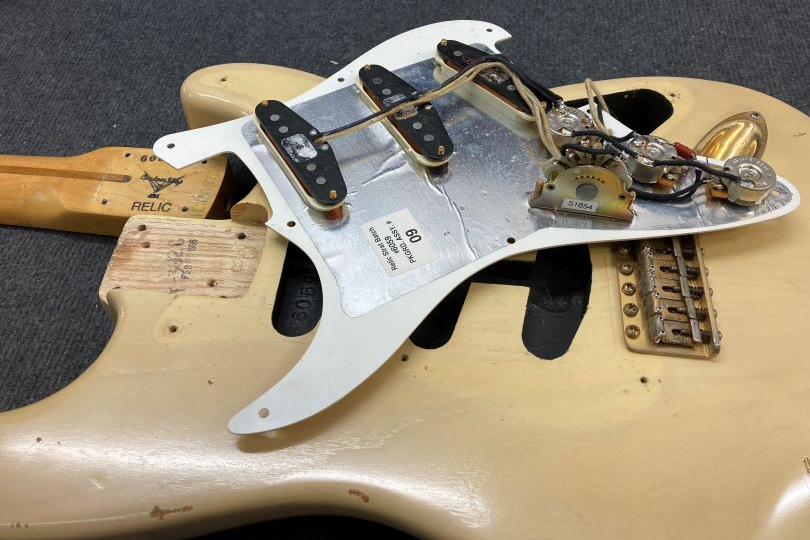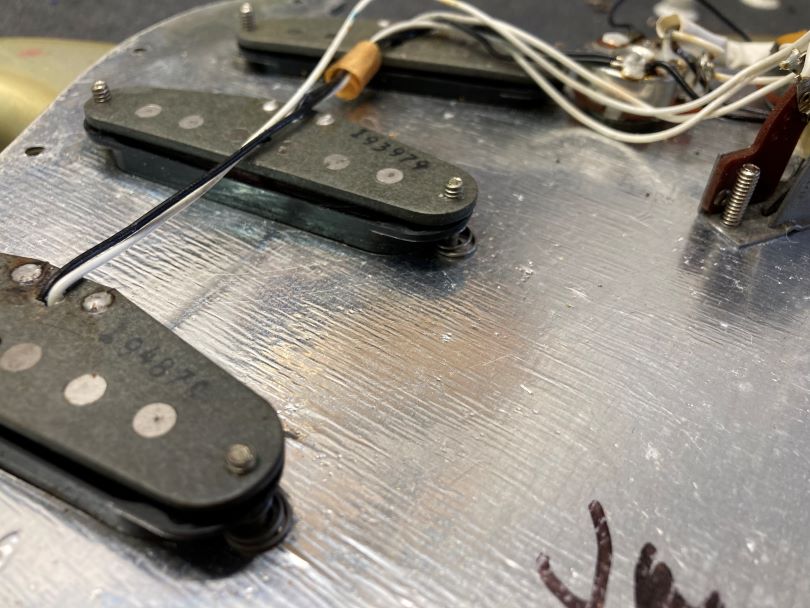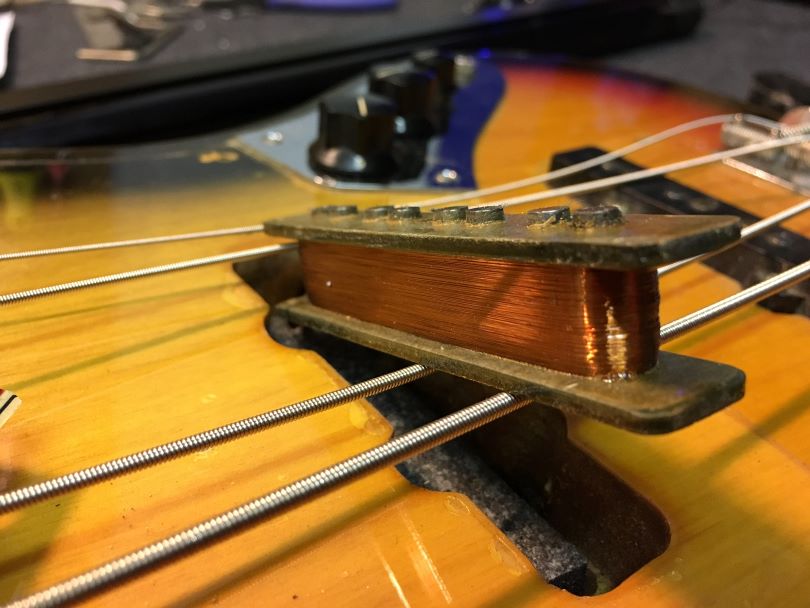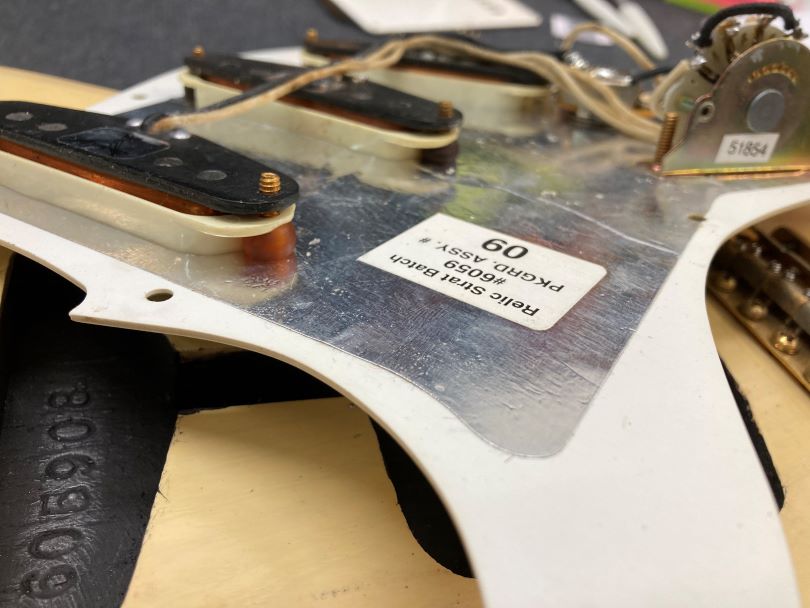
Under the Hood #6: History and Specifications of Fender Pickups
The development of pickups is absolutely fundamental to the electric guitar. In the next part of our series, let’s take a look under the hood of Fender pickups across time. We’ll not only see their specs in their prime but also how Fender is building on them today.
What makes vintage Fender guitars so popular? The answer is: the quality of the wood, the paint, the construction, and also electronics, especially the pickups. So it’s not just the quality of one component that matters, but the guitar as a whole—it’s the compatibility of the wood and pickups, the quality of the work, the overall approach to manufacturing.
When the Fender brand was owned by Leo Fender, manufacturing was approached from the point of view of quality, innovation, market, and business at the same time. There weren’t as many guitars being made, and the emphasis was on quality instead of quantity. Production processes were devised that were both efficient and sustainable. After CBS took over the company, the main focus was quite the reverse—on reducing production times, cutting costs, and increasing the quantity of products on offer.
The production of pickups was affected in the sense that they lost their authenticity and diversity. In Leo Fender’s time, the manufacturing was partly manual, which made each pickup different and original in its own way. CBS introduced machine production of pickups so that all were qualitatively the same. But, of course, with reduced time and costs. From a historical perspective, the pickups from the Leo Fender era have thus become very interesting to analyze and are now highly appreciated by collectors and users alike.

The history of Fender pickups
From 1950 to 1964, Fender pickups were made in what is known as a black bottom design, being black on the bottom side. They had alnico magnets with rounded edges. The wire was copper in color, and the entire pickup was dipped in hot wax to eliminate unwanted microphonics. Surgical rubber tubing was used as springs to adjust the height of the pickups. In old pickups, this rubber hardens over time and no longer springs, so it is often necessary to replace it.
From 1964 to the end of the 1970s, so-called grey bottom pickups were used. Always one of the pickups was dated, at first by hand, and in the late 60s, the date was printed in ink. The pickups were no longer waxed; they had a thin layer of lacquer, which is harder to see than wax. The windings are burgundy in color. Cone-shaped springs are used to adjust the height of the pickups.
The old Fender pickups were wound on mechanical machines that were manually operated, so the number of turns could have varied for each pickup. The coil was turned by the machine, but the wire around the coil was always wound by a person. The pressure with which the worker held or layered the individual layers of the wire allowed for subtle differences in sound. This is what gave vintage Fenders their authentic and unique sound. In the second half of the 1960s, Fender wholly automated the production of pickups, and the resulting sound became consistent and unchanging.
The gauge of the winding wire was the same for all pickups. Fender referred to it as 42. Only the Telecaster neck pickup was wound with size 43 wire, which is usually apparent when comparing pickups.
Until 1965, Fender pickups used larger magnets. These were alnico, not ceramic. Today, the magnets are not as strong in old Fender pickups, which gives them a distinctive sound. If the pickup magnet is too strong, it tends to pull the vibrating string towards it. This shortens the reverberation of the strings and makes them sound slightly distorted. A weak magnet does the opposite, and the resulting sound may not be ideal either. It’s all about compromise.
While the winding wire used today is the same, in the past, different insulation was used with different chemical composition and thickness. These factors change the overall size of the winding, which impacts the sound, too. It also affects the capacitance and inductance of the pickup. This is one of the reasons why it is challenging to manufacture pickups authentically according to old specifications.

The unsurpassed sound of vintage pickups?
The sound quality of pickups is a highly subjective matter. What is great for one person may be mediocre for another. Everyone likes a different sound, and therefore everything to do with pickups is so interesting.
Many enthusiastic fans of old Fenders are inclined to believe that their pickups are the best-sounding ones. They are really interested in every detail, comparing not only individual period specifications but also the production of the time with that of today. Most of them agree that they find the old pickups more sonically authentic.
This is also due to different construction, different materials, different manufacturing processes, and different potentiometer sizes. All these aspects play some, even if a minor, role in the final sound.
The question is whether these differences are audible. For someone who has had the opportunity to try hundreds of such guitars and pickups, it’s certainly an exciting discovering. However, most ordinary mortals have to settle for comparing the sound on albums and YouTube—or reading about them.

Vintage pickups and technical failures
The regularity with which old Fender pickups die is very interesting. We are talking about pickups from the fifties or sixties, which have a shorter lifespan than, for example, Gibson pickups from the thirties.
In terms of sound, it’s quite easy to spot the difference. When playing, the pickup sound is very weak and thin, without bass, having no zip. Even if the winding is broken, due to the magnetic field, the pickup can still play a bit. However, if the tone diaphragm potentiometer is turned a bit, the sound is lost completely. In another case, the pickup doesn’t play at all.
Collectors of old Fenders give a simple reason why this phenomenon occurs. It’s the pickup material itself. The pickup windings were in direct contact with the magnets that ran through the center of the pickup. Over time, a chemical reaction developed between the windings and the magnets, which broke the windings at their core. If the winding breaks at the end of the pickup, it can be repaired by unwinding it slightly and soldering it back to the contacts. However, a complete rewind is usually necessary if the winding breaks at the magnets inside the pickup.
The second reason for damage to the pickups is often unprofessional intervention in the magnets. Occasionally, musicians adjust the officially non-adjustable height of the magnets by pushing them further away from the strings. On old Fenders, this was mostly done with the magnet on the G string. By going down, the magnet can damage the winding as it is in direct contact with it. The magnets on these pickups had a rougher surface and, therefore, could easily break the windings.
Nowadays, Fender has solved this problem by having the magnet surfaces finely lacquered. This prevents direct contact between the magnet and the windings and avoids a chemical reaction between them. There should also be no potential damage to the windings when handling the magnets.
In general, you can do a dead pickup test with a multimeter by measuring the ohms or resistance. If you don’t count any resistance or if it has extremely high and unstable values, you can be sure that something is wrong. To be safe, it is a good idea to disconnect the pickup from the circuit so that you can measure it alone, without the distractions and misleading influences of the rest of the electronics.

Repairing old Fender pickups by Seymour Duncan
Old Fender pickups have been extensively repaired by Seymour Duncan. In the case of a broken winding, he unwound the entire winding to the point of damage. He then spliced it back together and wound the rest of the old winding back onto the pickup. This preserved the authenticity and character of the sound. The disadvantage of this process is that it’s time-consuming. However, the quality is quite high.
Seymour Duncan has observed the characteristics of older Fender pickups, the amount of rotation, and averaged the resulting values during numerous repairs. This produced unique data that gave insight into how Fender developed pickups over time.
His observations show that the resistance values of pickups on Stratocasters increased from 1954 to 1964. In 1954, according to his findings, the average pickup value in ohms was 5.76K. The 1964 pickups had values of 6.25K. At that time pickups were wound manually. From 1965 onwards, the manufacture switched from manual to machine production, and the values changed again. In 1965 the value on the pickups was 5.8K, two years later, 5.88K. The number of winding turns increased proportionally to these values.

Current Fender pickups
Today, Fender offers a wide choice of pickups. With each new series of guitars come their modifications. Popular pickups are Noiseless, which have evolved over several generations. They have a design suppressing the typical hum of single coils.
Lace Sensor pickups are interesting. They were also used by Eric Clapton at one point. When setting them up, unlike other Fender pickups, it is recommended to put them as close to the strings as possible to make their sound stand out.
You can also get a taste of the vintage sound with the Custom Shop pickup series. They are made to the specifications of specific years or models. A popular example is the Fender Custom Shop Twisted Tele set, where an effort was made to get the sound of a Stratocaster pickup out of the Telecaster neck pickup. This is due to the taller coil, alnico V magnet, and 42 wire.
If you like the ’50s or ’60s era, Fender makes ’50s and ’60s pickup sets that faithfully replicate the sound of those years.
Also popular are Fender Texas Special pickups, which approximate the Texas blues tone. They’re overwound by a few turns for extra power, made from alnico V magnets, and have a great midrange with crystalline highs and solid bass thanks to their construction.

A selection of today’s pickups for Fender guitars, not just from Fender
Today’s pickup manufacturers face a daunting task. The needs of musicians are very diverse and specific. At the same time, the first Telecaster pickups set the course for today. Many musicians want to come close to the golden fifties and sixties in sound. This is a great challenge for manufacturers.
Today’s pickups are made with different processes than before, other materials are used, and all of this plays a role in the final sound. In the manufacturers’ offer today, we can find pickups that faithfully imitate specific models or years of Telecasters, Stratocasters, and others. If you like the sound of a 1952 Telecaster, for example, just choose between manufacturers who produce pickups to these specifications. You can also make a choice according to the style of music you want to play. If you are into blues or country, there are always several types of pickups that are a good choice.
From my own experience, I recommend trying out Lollar pickups. They are high quality and their sound is very close to vintage ones. That's also the reason why they are so popular. For example, the Lollar ’52 T model faithfully simulates a 1952 Telecaster. Their producer confirms that this pickup provides a balanced response with a softer sound. It faithfully attempts to approximate the famous Blackguard Telecasters.
If you have found an error or typo in the article, please let us know by e-mail info@insounder.org.

